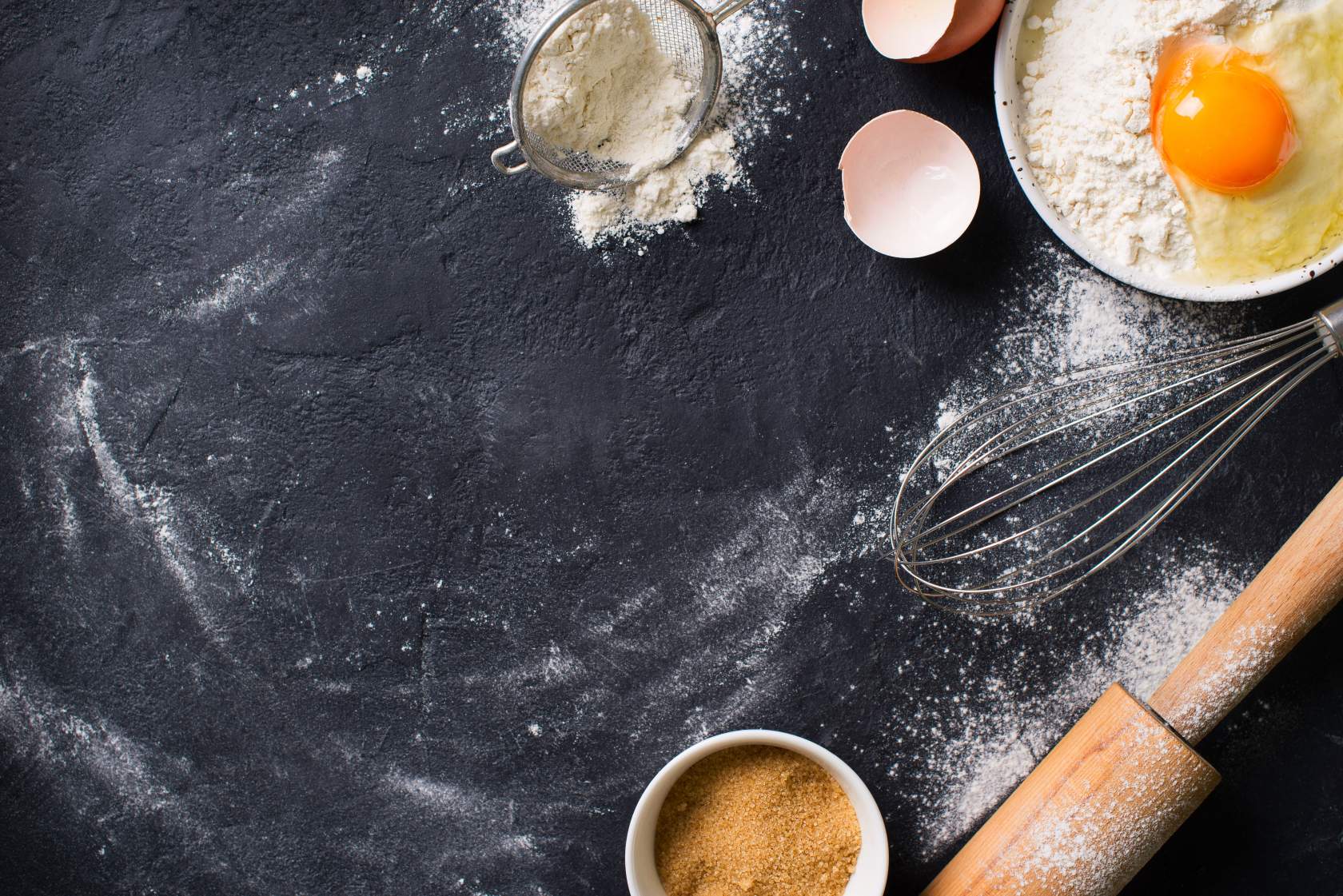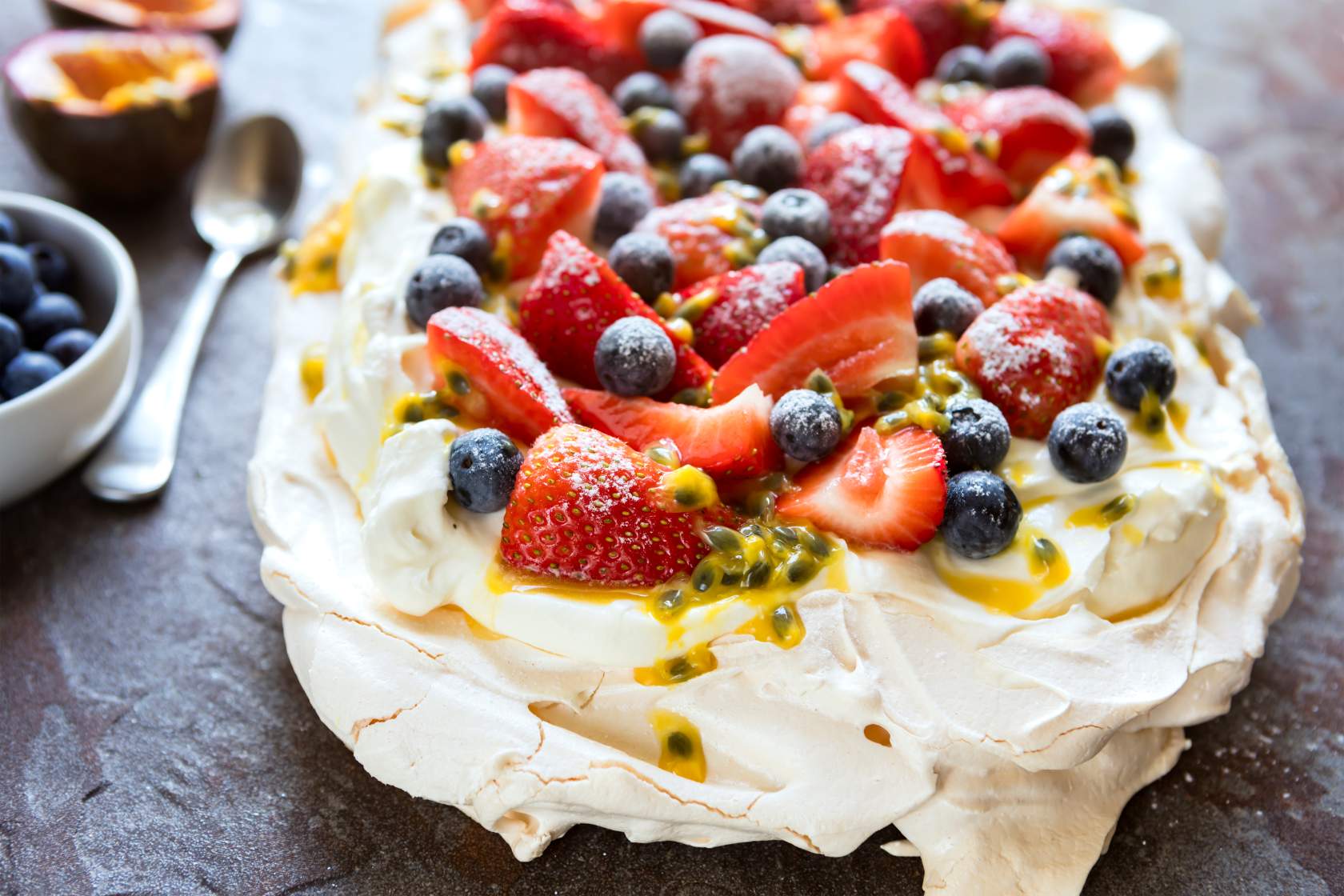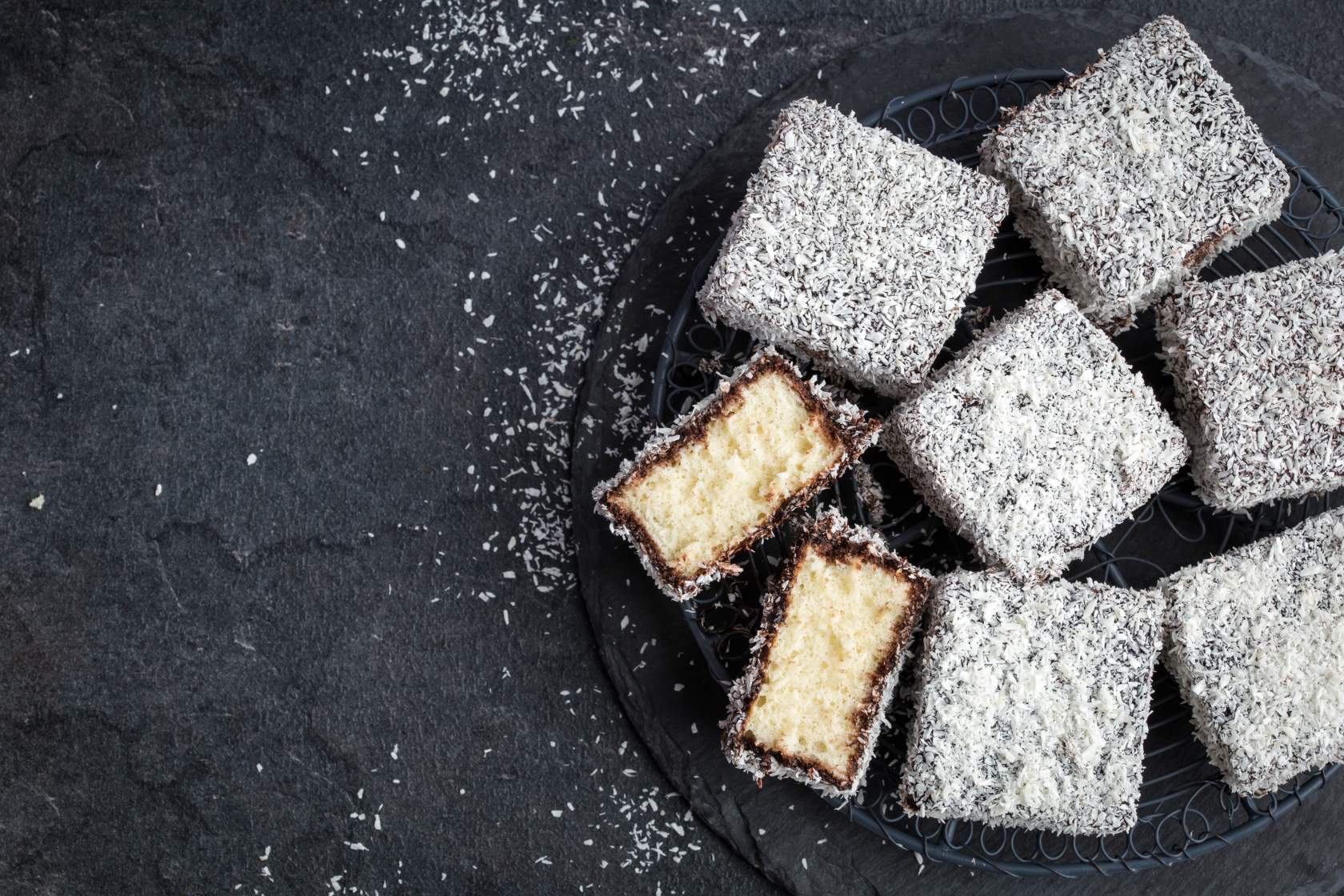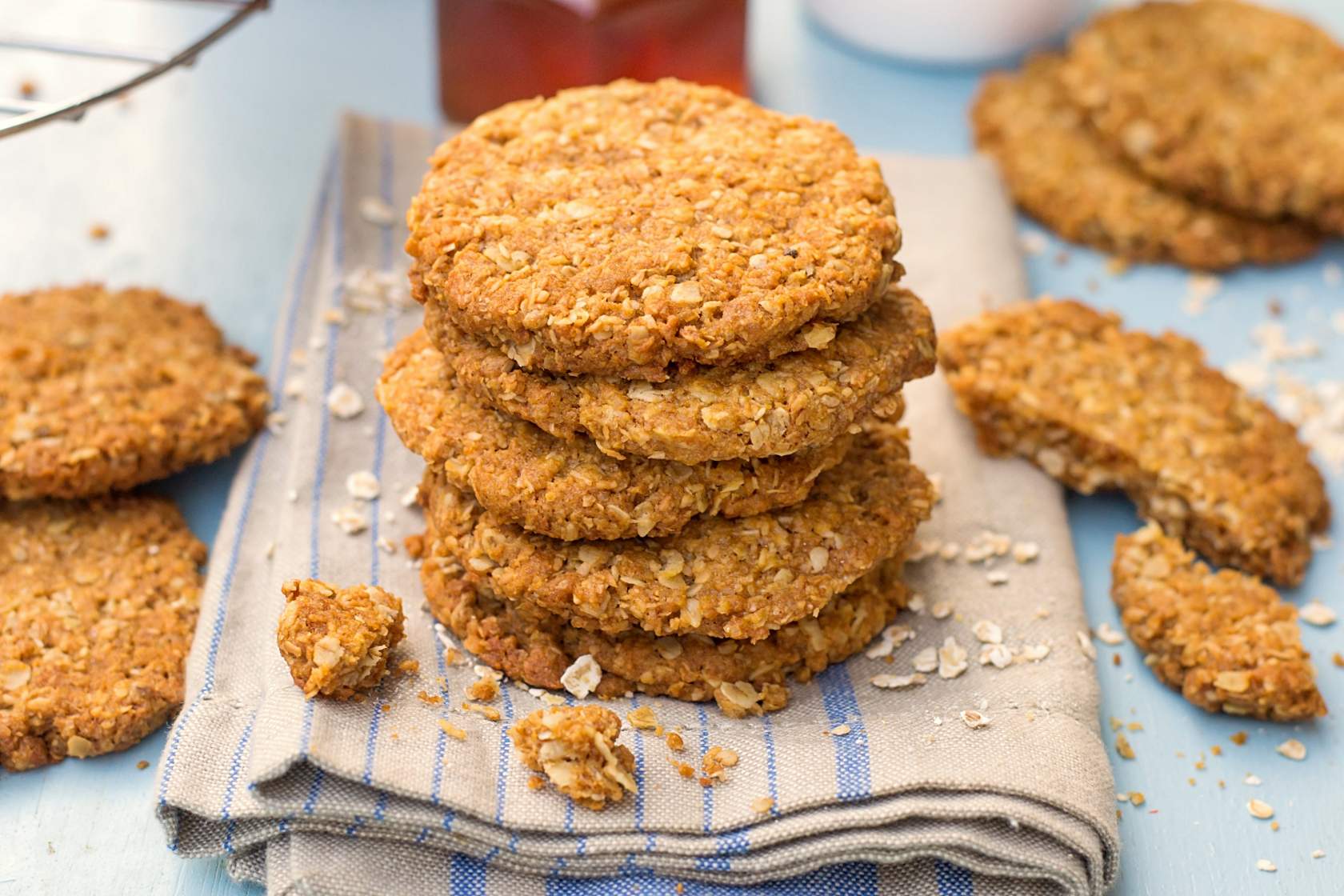

Anzac-inspired baking ideas
We may never settle on the origin of these sweet treats, but we can all agree they’re delicious.
As far as the rest of the world is concerned, Aussies and Kiwis are interchangeable…but we know better. Our finely tuned ears immediately distinguish one accent from the other and we understand that our distinct histories and cultural influences have delivered two unique places and populations. Of course, we’ll always band together when meet in far flung places and feel free to have a friendly dig at one another almost immediately, thanks to a deeply held – yet light-hearted – rivalry. What we don’t always agree on, however, is the origin of some of our most celebrated cakes, biscuits and desserts.
Pavlova
The Pavlova, a light and airy dessert named after the legendary Russian ballerina Anna Pavlova, is a sweet meringue-based delicacy topped with fresh fruits and whipped cream. Simple and sublime. Both Australia and New Zealand have strong claims to its invention, leading to a spirited trans-Tasman disagreement.
History
The origins of the Pavlova date back to the 1920s, with both countries asserting that their chefs were the first to create this masterpiece. New Zealanders attribute the creation to an unnamed chef, who prepared the dish for Anna Pavlova during her tour in 1926. On the other hand, Australians argue that their chef, Herbert Sachse, crafted the first Pavlova at the Esplanade Hotel in Perth. No matter which side is right, it’s been a staple desert across both countries from the 1920s onward
Pavlova recipe
Ingredients
4 large egg whites
1 cup caster sugar
1 teaspoon white vinegar
1 teaspoon vanilla extract
1 teaspoon cornflour (known as cornstarch in other parts of the world, not to be confused with corn flour, a finer flour made from whole corn kernels)
1 cup whipped cream
Fresh fruit for topping. Tradition dictates kiwi fruit and strawberry slices, along with passionfruit, but you can top with whatever you fancy – mango, peaches, berries, cherries – you really can’t go wrong.
Method
Preheat the oven to 150°C (300°F) and line a baking tray with parchment paper.
Beat egg whites until stiff peaks form, gradually adding sugar.
Gently fold in vinegar, vanilla extract, and cornstarch.
Spoon the mixture onto the prepared tray, forming a circular shape.
Bake for 1 hour, then allow to cool.
Top with whipped cream and fresh fruit before serving.

Lamingtons
Everyone loves a lamington…squares of sponge cake dipped and coated in chocolate icing then rolled in desiccated coconut. While the lamington is widely accepted as being Australian, some still claim the recipe originally travelled from New Zealand. Regardless of who’s right, the delicious chocolatey squares have been a favourite in kitchens, bakeries and cake stalls across both countries for more than a century.
History
Legend has it that Australia’s Governor of Queensland from 1896 to 1901, Lord Lamington, is the true inventor. Noted for being a frugal man, the story has it that a maid accidentally dropped a sponge cake into chocolate and Lord Lamington suggested coating it with coconut to avoid messy fingers…and so a star was born. Some argue that the recipe landed on Australian shores courtesy of Lady Lamington, a New Zealander, so the debate continues to rage.
Cheats’ lamington recipe
Using a store-bought sponge cake cuts down preparation time.
Ingredients
1 sponge cake (store-bought or homemade)
2 cups icing sugar
1/3 cup cocoa powder
1/2 cup milk
4 cups desiccated coconut
Method
Cut the sponge cake into squares.
Sift icing sugar and cocoa powder into a bowl. Mix in milk to make the chocolate icing.
Dip each cake square into the chocolate icing, ensuring even coverage.
Roll the coated cake in coconut until fully covered on all sides.
Allow time to set before serving.

Anzac biscuits
Anzac Biscuits are a beloved Australian and New Zealand tradition, especially around 25 April each year, when we observe Anzac Day and commemorate soldiers of the Australian and New Zealand Army Corps (ANZAC) during World War I, along with others who have served. These crispy, golden biscuits are known for their simplicity and long shelf life.
History
Anzac Biscuits have a historical connection to the war effort, as it is believed that they were sent by loved ones to soldiers overseas. The absence of eggs in the recipe allowed the biscuits to stay fresh during the long journey. Both Australia and New Zealand embrace the Anzac Biscuit as a symbol of resilience and unity.
Anzac biscuit recipe
Ingredients
1 cup rolled oats
1 cup desiccated coconut
1 cup all-purpose flour
1 cup brown sugar
125g butter
2 tablespoons golden syrup
1/2 teaspoon baking soda
2 tablespoons boiling water
Method
Preheat the oven to 160°C (320°F) and line baking trays with parchment paper.
In a large bowl, mix oats, coconut, flour, and brown sugar.
In a saucepan, melt butter and golden syrup.
Dissolve baking soda in boiling water and add to the melted butter mixture.
Pour the wet ingredients into the dry ingredients and mix well.
Drop spoonfuls of the mixture onto the baking trays, allowing space for spreading.
Bake for 15-20 minutes or until golden brown.
Allow to cool on the trays before transferring to a wire rack.

While we may not settle on the true origin of these iconic recipes, one thing is certain – all three are much more than just sweet treats. They are symbols of cultural significance that both Aussies and Kiwis hold dear – desserts that embody the spirit of our friendship, our camaraderie and our shared history…and that’s something to be savoured.
